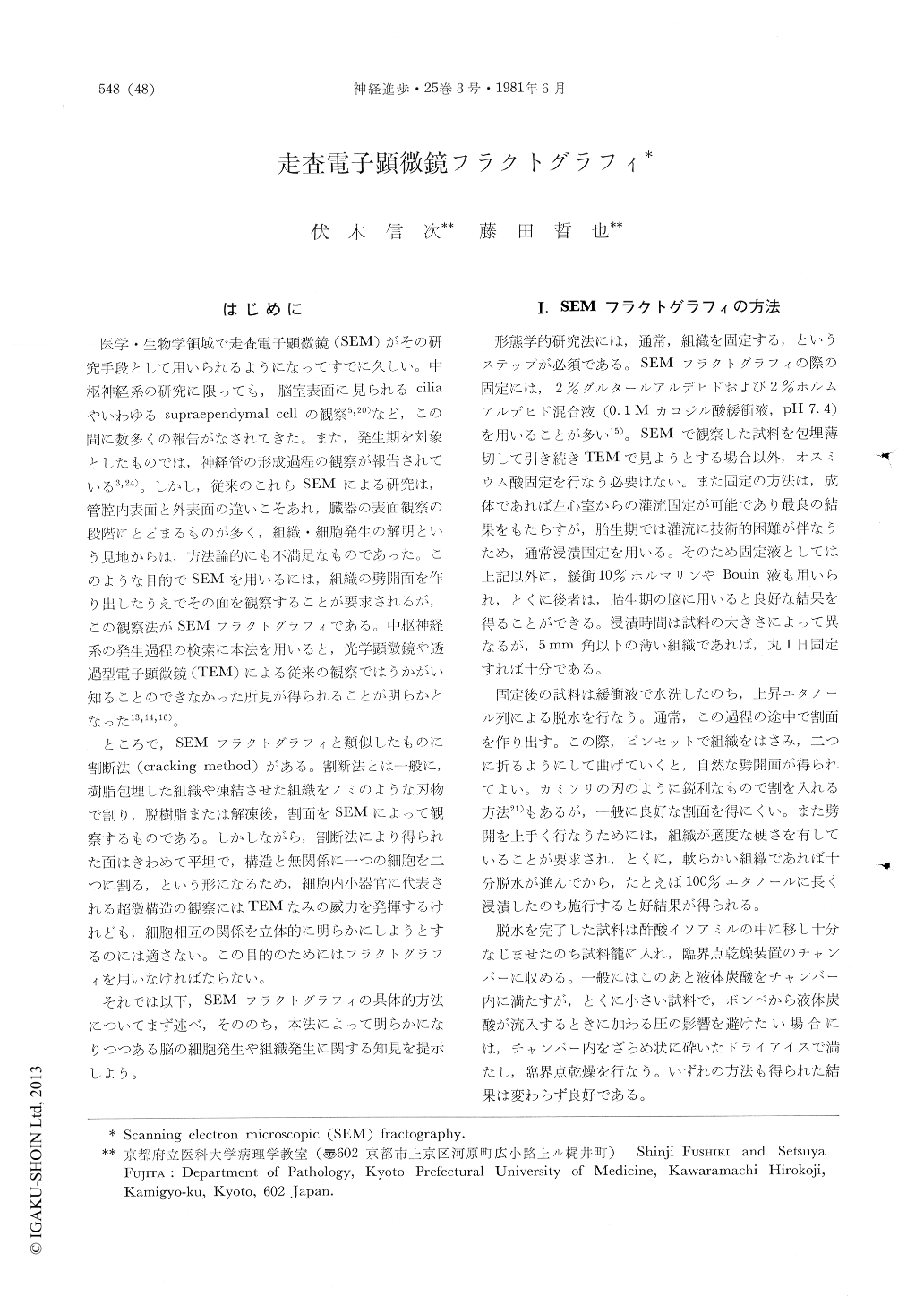Japanese
English
- 有料閲覧
- Abstract 文献概要
- 1ページ目 Look Inside
はじめに
医学・生物学領域で走査電子顕微鏡(SEM)がその研究手段として用いられるようになってすでに久しい。中枢神経系の研究に限っても,脳室表面に見られるciliaやいわゆるsupraependymal cellの観察5,20)など,この間に数多くの報告がなされてきた。また,発生期を対象としたものでは,神経管の形成過程の観察が報告されている3,24)。しかし,従来のこれらSEMによる研究は,管腔内表面と外表面の違いこそあれ,臓器の表面観察の段階にとどまるものが多く,組織・細胞発生の解明という見地からは,方法論的にも不満足なものであった。このような目的でSEMを用いるには,組織の劈開面を作り出したうえでその面を観察することが要求されるが,この観察法がSEMフラクトグラフィである。中枢神経系の発生過程の検索に本法を用いると,光学顕微鏡や透過型電子顕微鏡(TEM)による従来の観察ではうかがい知ることのできなかった所見が得られることが明らかとなった13,14,16)。
ところで,SEMフラクトグラフィと類似したものに割断法(cracking method)がある。割断法とは一般に,樹脂包埋した組織や凍結させた組織をノミのような刃物で割り,脱樹脂または解凍後,割面をSEMによって観察するものである。
Abstract
Scanning electron microscopy has been applied to investigate the central nervous system (CNS), demonstrating surface morphology of cerebral ventricles, developing neural tubes and other structures. These studies disclosed topographical changes as to the distribution of ventricular cilia and a fusion process of apposing neural folds. While these investigations aimed mainly at ob-serving either internal or external surfaces of the brain or the organism as a whole, the method, which we call "SEM fractography", was devised in oder to examine the fractured surface of the organ.

Copyright © 1981, Igaku-Shoin Ltd. All rights reserved.


